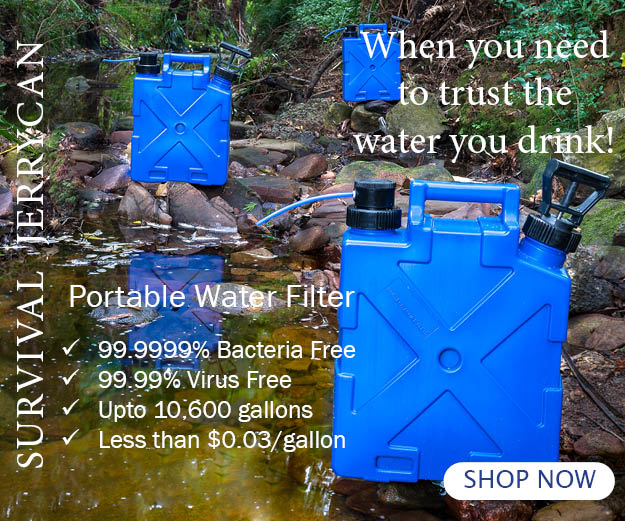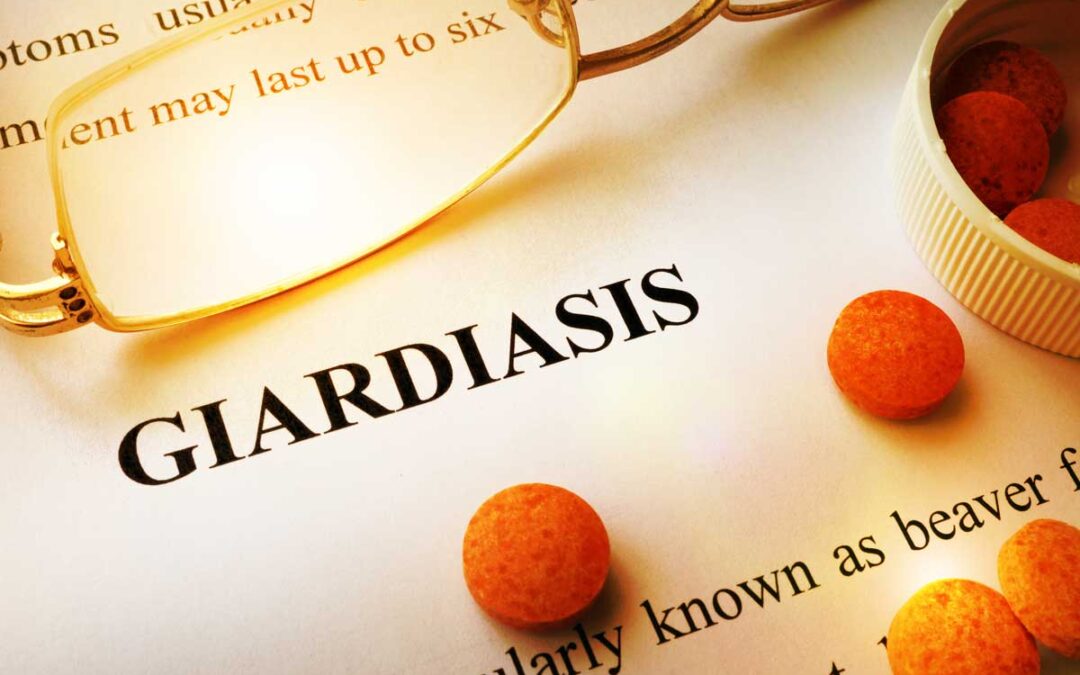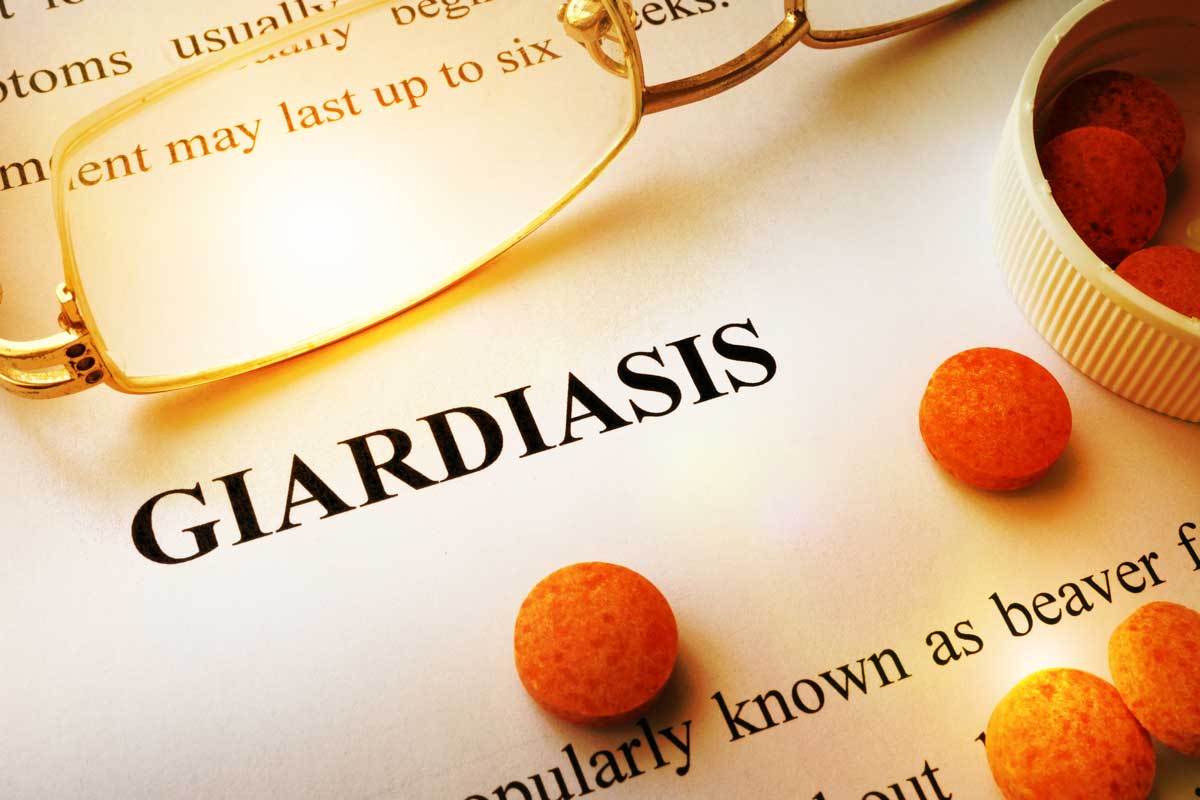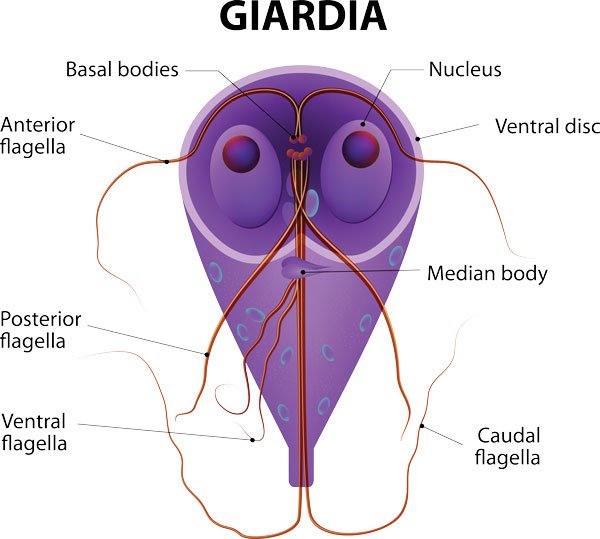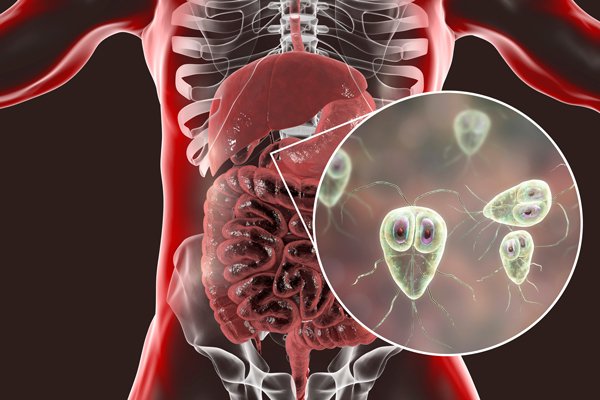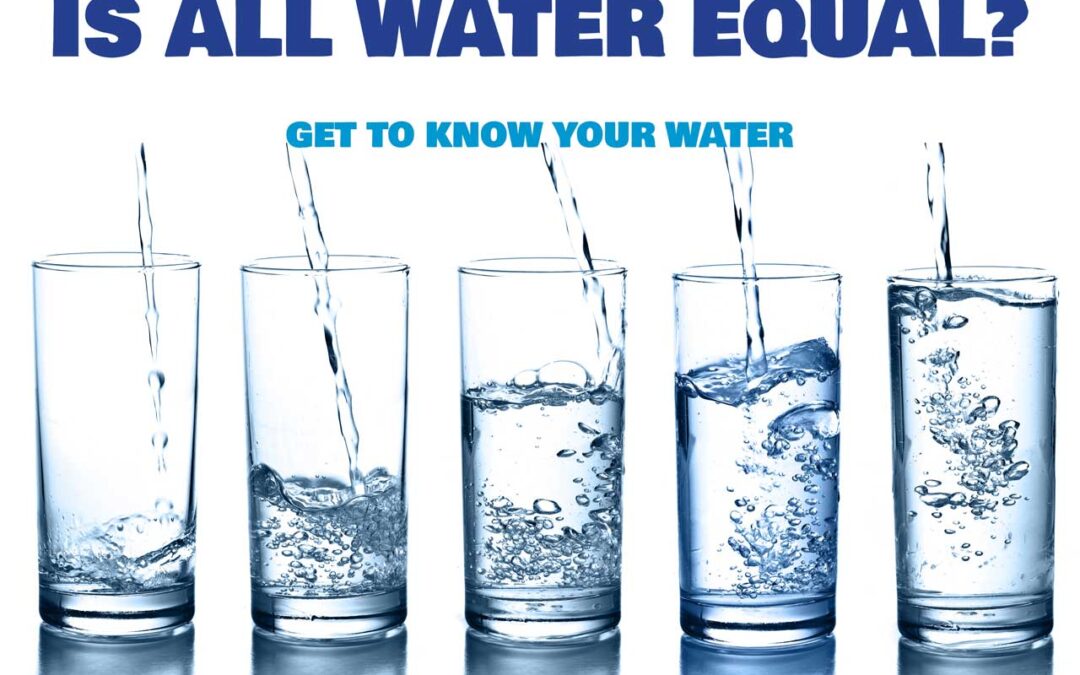
Is all Water Equal? Is all Water the same?
Water makes up about 80% of our bodies and almost 95% of our brains. We need it not only to live but to thrive and feel alive. We should be drinking more than two or three liters a day. But is it all equal? Is water just water?
No!
In a word, no – All water is not equal. Maybe it is created equal, but after many various and sometimes arduous journeys, by the time it reaches us it is usually no longer pure and definitely not equal. In fact, the hardships involved in getting good water are the underlying cause of all the different types you see today, and it can get confusing.
We have reached a point where a multitude of methods have been tried to bring water either as close to pure H2O as possible or to simply make it marketable – sometimes deceptively so – but in the end, water should be water. And we have a pretty clear definition of that: H2O – Nothing else.
But for our practical purposes here, as we encounter so many different options as far as water to buy to drink, use for contact lenses, use in medical applications, and different methods of cleaning or purifying H2O in our homes, or in walking up to dispensing machines with large, plastic (and often poisonous) jugs to fill them in the hopes of returning home to the family with something pure to drink, we find waters are not the same.
![]() “Water is the driving force of all nature.” ~ Leonardo da Vinci
“Water is the driving force of all nature.” ~ Leonardo da Vinci
We often find it smells like chlorine or rotten eggs. We often find it leaves a scaly residue on glass shower doors or glass drinking cups after a dishwashing.
Often well H2O will leave a slimy layer of rust all over everything. It’s a bit painful to think we take in substances from water not only by drinking by through our skin when bathing as well.
We’re told to drink at least eight glasses of water each day or even more depending on how active you are. Regular hydration has been found to be basic to good health and without it we can experience:
- Headaches
- Fatigue
- Sleepiness, and
- Dehydration.
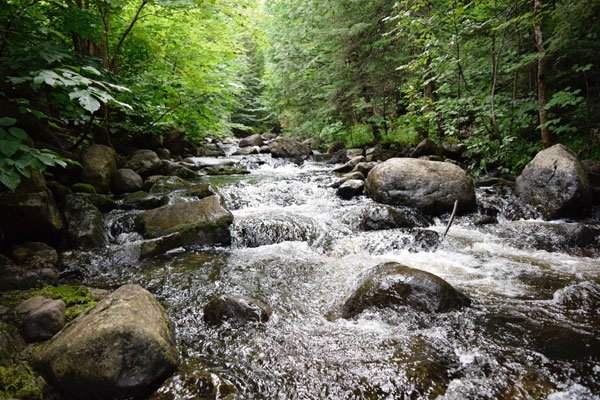
So what to choose?
Choices, Choices…
There are even types within the types! Study your options in the bottled H2O section of your grocery store and you’ll see what I mean. Which bottled water to buy? They make different claims and have been packaged to appeal to different users, but which one, if any, is the cleanest and healthiest?
And why the selection, anyway? Even if you are simply looking at gallon jugs you will see spring water, purified water, purified with minerals added, distilled H2O – in fact you might even see spring water but upon looking closer see the source is a local city’s municipal water supply! So because you have city water and don’t trust it enough to drink it, you buy what is labeled Natural Spring Water only to find it’s taken from another city’s utility!
It can be frustrating, to say the least.
There are lots of types of water, but what should you be drinking? We will easily explain the different types in this book so that you no longer have to wonder when confronted with a choice.
We will not only look at what’s available in the grocery or convenience store, but discuss the life cycle of water underground, different water supplies to your home, and finally, how you can be sure you always have a ready supply of clean, pure water that is safe, refreshing, and reliable.
After all, a glass of water should calm and cool you down – not the opposite!
80%
Our bodies are composed as much as 80% from water and we can only live a matter of weeks without food but scant days without life-giving water. Most people are walking around dehydrated as you read this, and not even aware that simple, clean water could remedy much of what ails them.
The first step in a happier, healthier life is awareness – awareness of what not to drink, followed by solutions for obtaining clean, healthy H2O anywhere at any time. By the end of this book, you will be able to do both.
In fact by the end of this article, you will be able to put together your own healthy plan. In order to do that you’ll need three things:
- Knowledge
- Testing
- Solutions
You’ll be able to do that, too.
To your health!
Grocery Types
![]() “Let there be work, bread, water and salt for all”. ~ Nelson Mandela
“Let there be work, bread, water and salt for all”. ~ Nelson Mandela
Everywhere you look, it seems people have water with them. While this may be a good thing, as we understand the need to hydrate and the cleansing properties of getting enough water each day, most people are to some degree unaware of the danger they hold in that plastic bottle.
Just as buying groceries has become an intellectual burden – you often don’t know what toxins and additives you are buying – so too has choosing water become a subject you need at least a quick education with.
If you choose incorrectly, for example, you can drink, drink, drink, and still suffer dehydration!
So as you look over the grocer’s shelves you might see purified, spring, mineral, artesian, and sparkling waters for sale. It would probably shock you to find many of these are simply filled from a regular tap and then packaged attractively.
So it’s worthwhile to find out what the types and differences are.
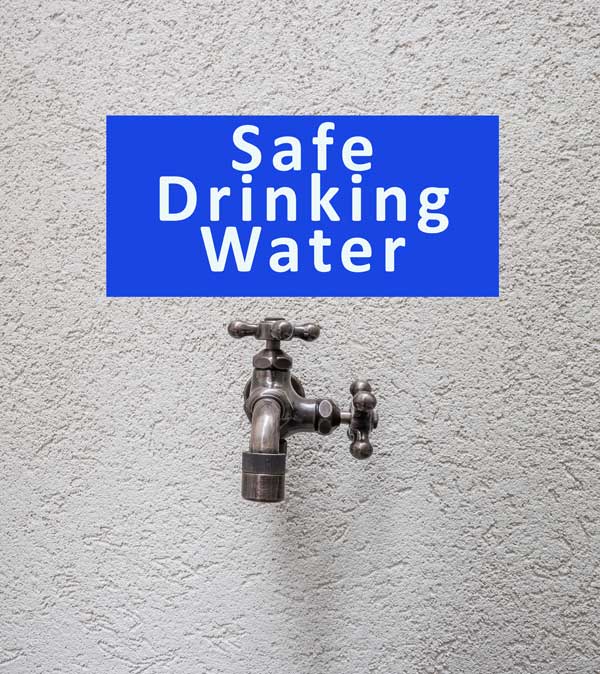
Purified Water
Labels that read “Purified” simply mean some means of removing impurities has been used on the H2O. Purifying water has gone on for thousands of years. Modern methods include:
- Deionization
- Reverse Osmosis
- Distillation
- Charcoal Filtering
- Ultraviolet Light
Very often the H2O is simply boiled so that impurities are removed, or specific minerals and contaminants have been removed. Purified H2O can often simply be tap water that has been run through one of the above processes.
The unfortunate irony is – the purer the H2O becomes, the more likely it is to obtain contaminants from the container it is placed in – especially plastics that contain BPA or Bisphenol-a. It might also be spring or well water that has been filtered to a greater or lesser degree.
The problem is, while we are told something has been done with the H2O, implying something has been removed, we are not always sure exactly what, and what is still lurking within!
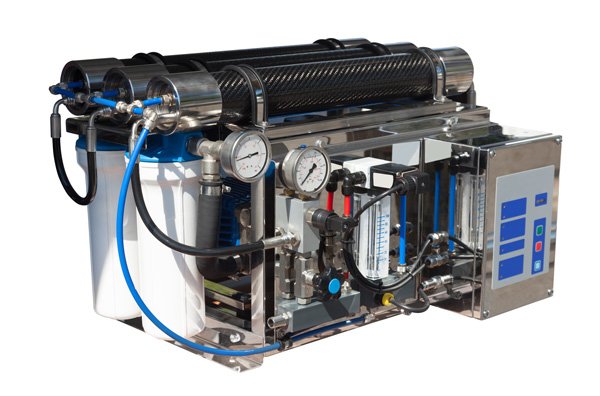
Reverse Osmosis
As reverse osmosis is one of the most common types of purified water you’re likely to find, and as it often has the best reputation – a phenomenon perhaps started by RO filter salesmen – it warrants a closer look here.
RO water has been forced through a filter at very high pressure. This removes larger particles including bacteria and parasites, as well as some of the chlorine and chloramines. Most minerals remain, however.
Some doctors have found that this can render the H2O not usable by the human body, and as a result it passes quickly through us. In fact someone drinking a lot of RO water through the day may still suffer dehydration because of this, especially if they notice they are constantly going to the bathroom.
One theory is that the RO process bends the chemical bonds in the H2O, making it useless to the body and it simply passes most of it through without benefit. And while freezing and thawing RO water or adding certain salt and minerals may help, these are usually impractical and skipping RO becomes the way to go.
Distilled Water
To distill water you boil it and collect the steam. The steam will of course accumulate again back into its original form, but the germs will all be killed by the heat and the solids will all be removed by heat or gravity, such as:
- Fluorine
- Chlorine
- Chloramines
The problem is the good minerals are also removed such as:
- Calcium
- Zinc
- Magnesium
A deficiency in these minerals can lead to brittle bones and muscle cramps. Adding a bit of sea salt can help. The lack of minerals can also destroy the satisfying taste.
Distilled water is normally used for irons and cleaning machines because the absence of heavy metals and minerals reduces the chances of rust or clogging.
Spring Water
Spring water is water that has naturally risen to the earth’s surface. It is mainly used for drinking, making beverages and in cooking. It may not have been processed at all prior to bottling if the bottle says, Natural Spring Water.
You’ll see more in this article about ground contamination, and this and other pollutants can be an important issue with untreated H2O. So while spring water may contain more naturally-occurring minerals, where it came from becomes very important.
While the earth itself can be an effective water filtration process, bacteria and parasites might linger without treatment. Spring water treated with ozone or UV radiation is intended to handle this problem.
If you do buy spring water, try to buy it when it has crossed state lines! The regulations are more intense for interstate sales and you are less likely to be buying tap water in a pretty package.
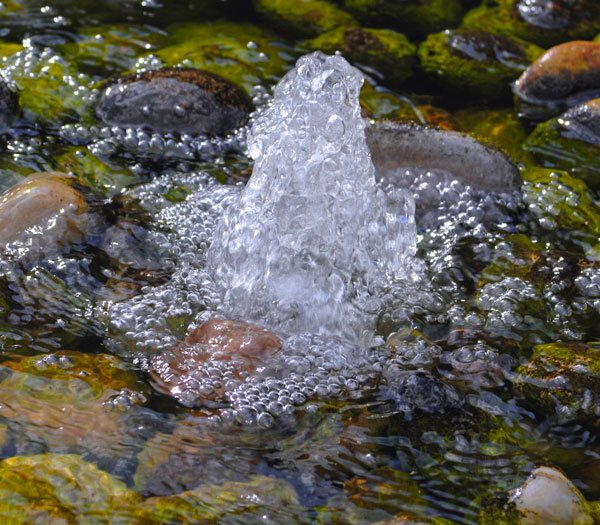
Artesian
Artesian water is taken from wells that tap into a confined aquifer or underground area of rock and sand containing water. Artesian water is therefore very similar and subject to many of the same perils as natural spring water.
Most countries has elaborated water cleansing plants, including filtration and chemical disinfectants, to purify it for consumption.
Mineral Water
As the name implies, mineral water has minerals! It has to contain more than a certain amount of total dissolved solids to qualify as mineral water. Natural Mineral Water meets that standard right out of the ground, but if it does not say Natural it could mean minerals have been added.
As a natural water source, it is also subject to ground contamination and container contamination like the other waters we are discussing.
Sparkling Water
This is the all-inclusive term for carbonated water. If you are trying to avoid or limit sodium, this is probably not the water for you because most are high in sodium.
This type of water may contain carbon dioxide naturally, or it may be flat with it added. Sparkling bottled waters may be labeled as sparkling drinking water, sparkling mineral water, sparkling spring water, etc.
Through muscle testing and acupuncture correlations, I’ve found that mineral water or sparkling water is great for hydration because these waters are usually from very protected high mineral content sources.
The best I have found is Mountain Valley Spring, San Pellegrino/Panna, or Gerolsteiner, and I always buy the products in glass bottles. Another option is SmartWater, which has its drawbacks but is overall good.

Seltzer Water
Seltzer water is usually tap water that has been filtered and then carbonated without adding minerals or salt, but may contain sugar or corn syrup. There are some seltzer waters flavored with fruit flavoring, which might be even worse if the flavorings are synthetic.
Club Soda
Club soda is normally tap water that has been filtered, carbonated, and injected with minerals and mineral salts. It is typically high in sodium, but makes a great household cleaner!
Heavy, Hard & Soft
![]() Blog comment: “Hard water makes me feel weird when I shower.”
Blog comment: “Hard water makes me feel weird when I shower.”
Response: “UGH I love HARD water…soft water makes me feel like I never get the soap off me or outta my hair.”
Heavy Water
Not to be confused with hard water, heavy water is water that contains a larger than normal amount of heavy hydrogen.
In fact, its chemical code is D2O or 2H2O rather than H2O. It literally means the water weighs more due to its composition. It’s similar to drinking water but about 11% denser.
Too much heavy water can kill, though! The production of heavy H2O started in the 1930’s along with the discovery of nuclear fission (although heavy H2O is not radioactive!)
It is sometimes used in conjunction with nuclear reactors. It is mentioned here so as not to be confused with hard or other types of water we drink.
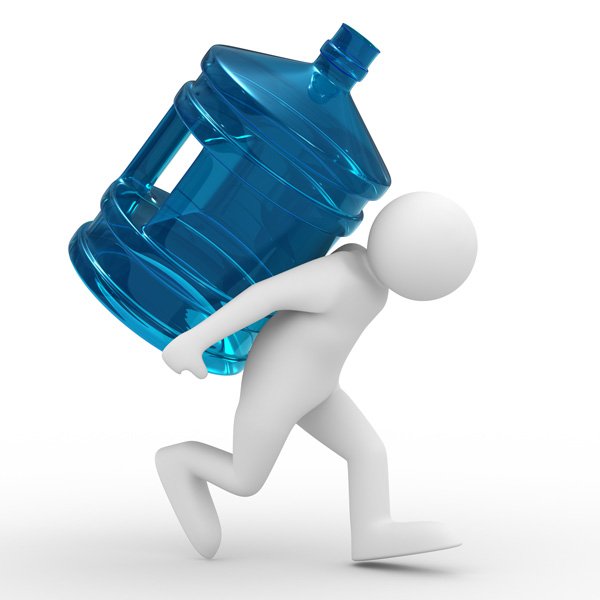
Hard & Soft
When we talk about hard and soft water, we are mainly talking about their effects in household applications rather than consumption. Most people are familiar with hard water being responsible for leaving a chalky residue thanks to calcium and lime on their shower walls and glassware. At the same time most are familiar with soft water as more of a silky feel – great on your soap budget, but you often never feel dry after a shower. So what’s the difference? Is one better than the other? Healthier?
Hard water simply has a significant amount of minerals in it, whereas soft water mainly has a degree of sodium. They taste different, behave differently, and have different effects.
Some believe hard H2O is healthier due to the minerals, and that it tastes better for the same reason. Some don’t like the often salty flavor in soft H2O and prefer not to drink it, but love the lack of effect it has on shower walls and dinnerware!
Hard water when heated will contribute to accumulating scale in pipes and tea kettles, and can be damaging to your appliances, water heater, and plumbing, and can be combated with installation of a softener.
Soft water makes better, more efficient use of soaps and detergents. Hard water, thanks to its content of calcium and magnesium, reacts with soaps to create a grayish soap scum. Softening water, then, is removing its minerals by treating it with lime or salt treatment.
Consumption
In addition to their different effects on the skin, hard and soft H2O can be a factor in your health otherwise. If you are on a low-salt diet you should avoid the sodium in salt water.
Hard H2O is frequently found in city water supplies and comes along with other problems discussed elsewhere, such as chemical content like fluoride and chlorine.
Soft H2O from wells is famous for containing sulfur that smells like rotten eggs and is of course subject to contamination from your immediate surroundings.
Ground Water
 “The crisis of our diminishing water resources is just as severe (if less obviously immediate) as any wartime crisis we have ever faced. Our survival is just as much at stake as it was at the time of Pearl Harbor, or the Argonne, or Gettysburg, or Saratoga.”
“The crisis of our diminishing water resources is just as severe (if less obviously immediate) as any wartime crisis we have ever faced. Our survival is just as much at stake as it was at the time of Pearl Harbor, or the Argonne, or Gettysburg, or Saratoga.”
~ Jim Wright, U.S. Representative, The Coming Water Famine, 1966 ~
Any understanding of water should include an understanding of groundwater. It helps to know where most of the water we use comes from and what it goes through (literally). It can help us appreciate the pains we go through to get good, clean, water, and it can affect the way we handle our health and our environment, too.
We depend greatly on groundwater supplies. In fact, groundwater furnishes:
- 51% of the drinking water for the entire U.S.
- 99% of the drinking water for those in rural areas
- 64% of groundwater is used for irrigation to grow crops
- And groundwater is a vital component in recharging lakes, rivers, and wetlands as well as various industrial processes.
The Hydrologic Cycle
Since the beginning of this planet as far as we know – has been in a constant state of motion and change. The hydrologic cycle describes water’s altering from:
- Liquid
- Evaporation into gas by the heat of the sun
- Forming clouds, called condensation
- And returning to earth as rain, sleet, snow, or hail.
When it returns to earth some moves from high to low and forms or joins bodies of water, called surface runoff, and some seeps into the ground to become groundwater again, called recharge.
It then travels through the aquifer as described until it discharges into rivers, streams, lakes, or rises to the surface again though wells and springs. The cycle begins all over again.
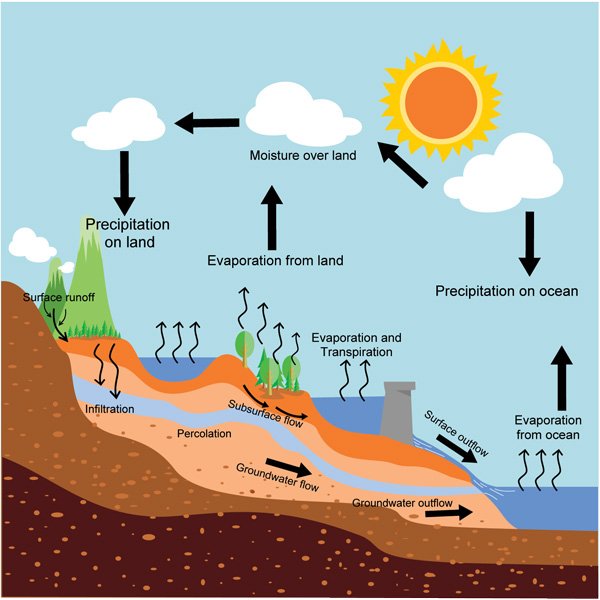
The Basics
Groundwater, of course, is water that travels through the ground below us. It filters through the sand, cracks, spaces, and between rocks which we call the aquifer. The area of an aquifer that contains water is called a saturated zone. The area at the top of the saturation zone is called the water table, and these can be twelve inches below us or several hundred feet deep.
As it travels through aquifers consisting of gravel, sand, and fractured rock like limestone, at varying speeds, and this kind of groundwater can be found almost everywhere. Like tides, groundwater rises and falls depending on rain and pumping. The volume rises it is said to be recharging.
Groundwater is accessed by streams, lakes, by pumping from wells, and by the natural upward pressure of artesian wells. Of course if an area uses groundwater faster than it is recharged or replenished, they will have a shortage. If they leave pollutants on the ground and in their water supply, they will have a contamination problem, which can be caused by:
- Landfills
- Septic tanks
- Gas tanks
- Fertilizers
- Pesticides.
This of course ruins the water supply.
Contamination
When things like gasoline, motor oil, road salts, pharmaceuticals, cleaners, pesticides, fertilizers, and other substances toxic for humans enter the ground they can reach the aquifer and contaminate the groundwater supply, making it unsafe for consumption.
- Leakage from septic tanks can cause hepatitis and dysentery in humans
- Contaminated well water can cause poisoning
- Long-term diseases such as cancer have been linked to contaminated groundwater
- Wildlife is at risk from polluted groundwater as well.

Contamination- Chemicals & Road Salts
Any chemical used as a pesticide or fertilizer, and road salts used to melt snow in winter, can all get carried down into the groundwater when it rains.
Contamination -Landfills
Those big, stinky mountains of garbage where your household trash is taken and piled on are supposed to be designed with a layer underneath, sealing them off from seeping into the groundwater supply, but this layer is often damaged or not there at all! This can lead to battery acid, paint (some which contains lead) and all sorts of other contaminants reaching the groundwater supply.
Contamination -Pharmaceuticals & Personal Care Products
Pharmaceuticals and personal care products, also known as PPCPs, include:
- Animal medicines
- Dietary supplements
- Perfumes
- Cosmetics
- Sunscreens
- Laundry and cleaning products
- Steroids
- Non-prescription and prescription drugs
- And many, many more.
Not only are they added to the groundwater supply by direct contamination, they also find their way there through human and animal excretion, bathing and swimming, as well as all of the already mentioned ways pollution reaches the aquifer.
Contamination -Septic Tanks
Septic systems exist in residential neighborhoods, office park, and commercial and industrial centers that are not connected to municipal sewage systems. They are designed to very gradually seep material back into the ground at a safe rate, and if improperly constructed, located, or damaged they can be a source of bacteria, viruses, and other groundwater contamination.
Contamination -Storage Tanks
Common storage containers can be sources of gas, oil, chemicals, and other harmful liquids, and they can be above ground or buried below ground and do damage. Tanks corrode, crack, and leak over time, and pose a threat to groundwater. In fact, it is estimated there are over 10,000 abandoned hazardous waste sites in the United States alone today and that number is growing!
Bottled Water
![]() “This everyday ‘healthy’ beverage poisons your body one swallow at a time.”
“This everyday ‘healthy’ beverage poisons your body one swallow at a time.”
~ http://www.mercola.com
Candy-Coated Evil (Plastics)
The picture of health seems to be a man and a woman, having completed some cardiovascular activity at a health club, smiling energetically, breathing deeply, one hand on a hand towel draped over a shoulder, and the other securely around a nice, healthy bottle of water.
Another might be the contrast between an overweight person, throwing care to wind as he or she takes up more than one seat is designed for at a fast food “restaurant,” chomping on a processed, red meat burger and sucking down a Coke, while in the not too far away distance another, more slender person eats a brown-bagged lunch consisting of a nice salad and a plastic bottle of spring water as they read, sitting there on a park bench overlooking a lake.
Almost!
These healthy images are certainly in the right direction, and H2O brings with it a long list of health benefits (and financial, too!), and while we will soon explain how you can correct these images with you in them, with portable, healthy H2O on the go at any time, the bottled H2O most people display as proudly as their new Toyota Prius is not at all what it’s cracked up to be.
For instance, when it comes to the environment:
- 67 million H2O bottles are thrown away each day
- Of them only about 10% are recycled
- Bottled H2O produces over 1.5 million tons of plastic waste each year
- It takes over 47 million gallons of oil each year to produce those bottles
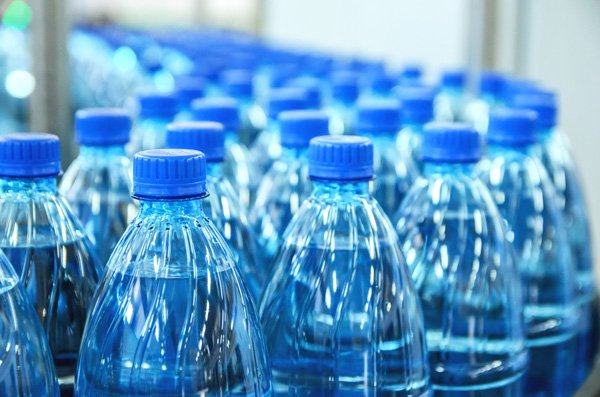
An enormous amount of fossil fuels are consumed delivering bottled waters and then again transporting the recycling material.
And while recycling is a much better practice than contributing to landfills and the production of methane gases, it is still labor-intensive and surprisingly often unnecessary. A single, BPA-free container can be your answer to having little or no environmental impact when it comes to bottled water.
Caveat Emptor (Buyer Beware)!
The other problem, of course, is the H2O itself. In fact over 70% of all bottled H2O never crosses state lines, making it free from FDA oversight. Roughly 40% of all bottled H2O is tap water, but now the problems have been compounded by drinking from poisonous plastic bottles!
And it isn’t just your individual servings of water subject to leeching and contamination by plastics. And commercially or home filtered H2O, spring water – in fact any water at all that is stored in the most common types of plastic can be a danger to your health because of BPAs, or Bisphenol A, and phthalates or PVC.

BPAs
Bisphenol A is a chemical that imitates estrogen and has a slew of potential health risks associated with it:
- Learning and behavioral problems
- Altered immune system function
- Early puberty in girls and fertility problems
- Decreased sperm count
- Prostate and breast cancer
- Diabetes and obesity
If you are a pregnant woman your baby is also at risk, and if you feed your baby with plastic bottles you should switch to glass immediately.
PVC
Phthalates are chemicals used to make plastics like PVC more flexible. They disrupt the endocrine system and have been linked to developmental and reproductive problems such as:
- Reduced sperm counts
- Testicular atrophy or structural abnormality
- Liver cancer
- Causing developmental problems (in rats) such as un-descended testes and testicular tumors later in life
- (In human boys born by exposed mothers) lower than normal levels of testosterone and de-masculinized traits
- A greater tendency for women to give birth early
Other Junk
And if the BPAs and PVC in plastics won’t get you, then any of these in the tap water attractively bottled might:
- Fluoride
- Chlorine
- Arsenic
- Aluminum
- Disinfection by-products
- Prescription drugs
Heat
And when you leave your H2O bottle exposed to the sun it can be even worse, believe it or not! Ultraviolet rays and the sun’s heat can accelerate the leaching of chemicals from your water bottle into your H2O, whether it sits in your hot, parked car or comes along with you on your hike or bike ride, or to the beach.
In fact, exposure to the heat of the sun has been linked to the release of dioxin into your water from the bottles, which has been linked with breast cancer.
You do have alternatives for healthy water on the go as we will discuss, but you will also want to avoid certain porous glass containers and aluminum which can also leach into your drinks.
Vitamin Water
The truth is ugly when it comes to so-called vitamin water. In fact, preying on our interest in improving health, soda manufacturers have combined tap water with harmful synthetic food dyes and high-fructose corn syrup and packaged and marketed it as a health drink.
High fructose corn syrup is a primary cause of diabetes and obesity and food dyes damage both physical and emotional health.
Water Delivery
While easy and convenient, subscribing to a water delivery service is likely not the boon to your health you may have hoped for, either. The plastic poses less of a threat than small, single-use bottles because it’s denser, but it still poses the above threats!
More importantly, you simply do not know where your H2O is actually coming from, even if they will provide glass containers.
Fluoride
Fluoride has been touted for years as a cavity preventative and has been for as long added to tap water, and so therefore appears in bottled water that comes from the tap. The truth is fluoride is a toxic substance that causes cavities as well as a host of other maladies including immune deficiencies and accelerated aging by damage to cells.
Studies now show children who regularly ingest fluoride to have more, not fewer, cavities, and after 50 years, the U.S. federal government is considering lowering the amount of recommended fluoride in drinking water supplies.
Expense
And finally, bottled water is in actuality very expensive. Both Pepsi-Cola’s Aquafina and Coca-Cola’s Dasani are sold side-by-side with their soda drinks and at the same price.
If you can find them as low as $1 for 20 ounces, you are paying 5 cents an ounce for what is basically filtered tap water which is bottled inexpensively and close to the source.
Compare that to gasoline!
At $3 per gallon, gas is acquired at tremendous political and financial expense then transported around the planet at great expense but with 128 ounces in a gallon, comes to just over 2 cents per ounce!
Water is even more lucrative than Big Oil!
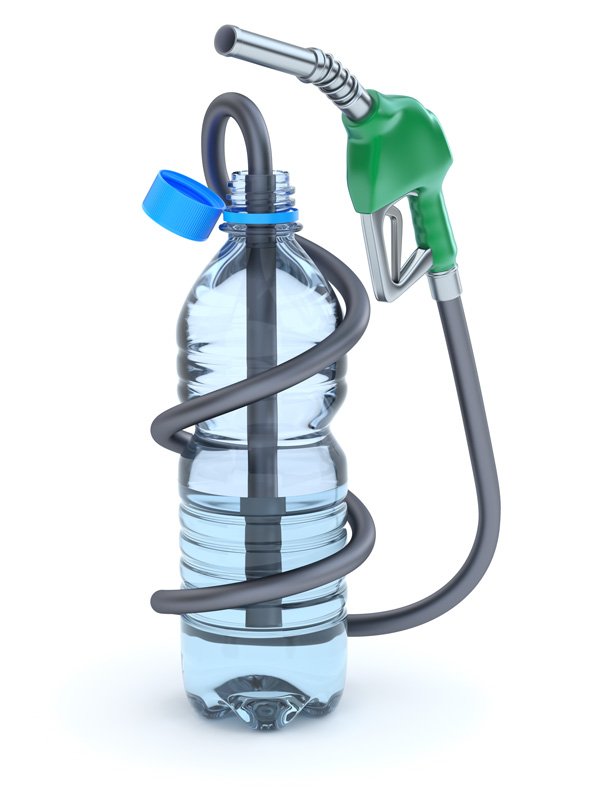
Corporatization
And these may all just be symptoms of what is being called the corporatization of water, the capitalizing on the blue gold of the 21st century.
“Thanks to increasing urbanization and population, shifting climates and industrial pollution, fresh water is becoming humanity’s most precious resource.” ~ www.mnn.com
Multinational corporations are buying up rights to groundwater supplies and distribution wherever possible, easily bottling it, and deceptively appealing to our desire for better health.
![]() I never drink water because of the disgusting things that fish do in it. ~ W. C. Fields ~
I never drink water because of the disgusting things that fish do in it. ~ W. C. Fields ~
Expensive H2O
Why we Buy
We buy bottled water – a notion that would have been found laughable not too long ago – for various reasons, such as:
- Taste
- Health
- Quality
- Convenience
- Portability
Yet bottled water has been estimated to be 1,900 times more expansive than tap H2O! Unfortunately we do not always get exactly what we hope for when we pay for bottled water, especially given the cost.
Follow the Money
It’s sometimes surprising how expensive bottled water can be. There are plenty of cartoons and jokes about it – in fact the idea is often satire by people charging for clean air. Sounds crazy perhaps, but so would have expensive bottled water not too many years ago!
The basic reason of course is scarcity. If we could get refreshing, clean, healthy water by kneeling by a riverside why pay? But we can’t. We’re either not near a nice river we’d drink from or we would only imagine making our worst enemies drink from such dirty bodies of water, by pushing the old car tires and garbage out of the way first.
It’s a travesty, but it’s the way it is. We must, to remain healthy and happy, find ways to secure clean water for drinking, and me probablyneed to reassess how much this is worth to us.
What would you spend on clean water if you could get it? What do you spend now? Many of us spend more than we realize but see bottled water and treated jugs of water carried home as a simple, understood necessity now. No question about it!
![]() “When the well’s dry, we know the worth of water.”
“When the well’s dry, we know the worth of water.”
~ Benjamin Franklin (1706-1790), Poor Richard’s Almanac, 1746
In a water shortage what would you spend? What priority would it take? A hundred dollars a month? A thousand? Without it we die in just days.
The consumer society and the Walmart Effect have us trained to think that all things are equal and can be compared based on price alone. This just isn’t so. Let’s say you had the following options for water to drink tomorrow at the grocery store:
- $ 1 for a bottle of H2O from the Hudson River in New York City (blecch!)
- $ 2 for a bottle of tap H2O from Tampa with a nice picture of fruit on the bottle?
- $ 3 for a bottle of H2O from a spring in France in a plastic bottle (with BPA’s)?
- $ 4 for a bottle of H2O filtered for chlorine, bacteria, protozoa’s in a BPA-free bottle?
Of course the first three are really not optional at all when you know what you’re talking about and care. Really, the last $4 option is the only option.
We might need to think differently. Our most expensive option above is the best deal, even in economic terms. People across the globe have been ignoring the lowering of quality in the name of price but it has been affecting our health and longevity.
The Water Business
Over $100 billion dollars each year is spent on bottled water in the United States alone. Bottled water is big business. It costs money. Consumers spend a great deal of money so they have water to drink. They generally think they are doing the healthy thing. That drinking more water is healthy is correct; that the water they are drinking is healthy is wrong.
About 20% of American bottled water companies will not reveal the source of water they use and over 30% reveal nothing about what – if any – treatment the water has undergone.
And nine out of ten best-selling brands refuse to answer one of the above questions. That includes:
- Aquafina (Pepsi)
- Dasani (Coca-Cola)
- Crystal Geyser
- Six out of seven Nestle brands
In fact only Nestlé’s Pure Life Purified Water agrees to disclose a specific geographic water source and treatment method and “offers an 800-number, website or mailing address where consumers can request a water quality test report.”
The fact is your city tap water has been taken from similar sources, treated, and purified to some extent often comparable or the same as that water found in expensive bottles. So many experts are now advising you move to filtered tap water. It’s cheaper, better, and more environmentally friendly.
Nonetheless, bottled water is big business. The 2.7 million tons of plastic used to make water bottles (from petroleum) could instead fuel over 100,000 cars each year, and most of the bottles are never recycled, either. They go to landfills which in turn can pollute the groundwater supply…
It’s been estimated that 90% of the money spent on bottled water every year goes to everything but the water!
Let’s see just where this money goes.
Packaging
Over 3 million tons of plastic is used by bottled water companies every year. That’s a big part of the cost in bottling water and a big environmental and economic cost to us all in transport and disposal, too. Add to that the cost of cardboard in the packaging and you see additional probable waste of fuel, money, and trees.
Advertising
Pepsi (who produces Aquafina bottled water) and Coca-Cola (who makes Dasani) spend over $40 million dollars a year on advertising. There’s another big part of the money spent on bottled water. And we discuss the illusion that these are healthy products in this book.
Filtration
You would hope filtration would be a significant part of the cost of bottled water but it’s not the biggest cost by far. In fact, as we discuss, some of it is not even filtered but simply taken from municipal water supplies! Ha, ha! Funny right? Someone’s laughing all the way to the bank with that one!
In all seriousness it’s a simple matter to simply start reading food labels on the products we buy. In fact that’s often one of the very first steps recommended when giving advice on all kinds of health improvement steps:
Start reading the ingredients lists and the food labels. You will likely be very surprised and it’s possibly the very best way to get smart, quickly.
Nonetheless, filtration is sometimes an expense in manufacturing bottled water.
Labor
Of course there are man hours involved in finding, collecting, transporting, bottling, marketing, selling, and sometimes filtering the bottled water we spend billions of dollars on.
Importation
These costs are listed in what seems to be descending order of expenses for bottled water production. Importation is a relatively small portion but nonetheless significant, as we are talking about a multi-billion dollar industry.
About 6% of the bottled water in the United States has been imported from overseas. About 70% or so stays within the state it was produced in to avoid regulation! But importation is a cost we pay for when we buy bottled water.
Other Costs
In addition to securing, packaging, labor, filtration, advertising, and importation there is also of course regular profit for companies and income for employees. These are ongoing.
If you decide to withdraw from this sub-economy (the bottled water industry) you’ll be happy to realize that with a home filtration system and a portable filter you take with you, you will have removed yourself from subsidizing their coffers.
Other bottled water industry expenses can include:
- Testing
- Storage
- Resource management and preservation which some companies do to ensure there will be a supply available in coming years
- Searching out new sources of water
Final say on the cost of bottled water
It goes without saying that bottled water generally costs money and tap water is generally provided by restaurants for free, despite the cost of the cup and other expenses, as a convenience to customers. The irony is sometimes the tap water is about the same or even better for you than the expensive bottled water!
Obviously there are expenses involved in delivering the bottled water, and this breaks down to confidence. People are confident, with a professional label and a big-name distributor that bottled water has been determined to be healthy and smart by somebody “over there.”
The break of trust and the irony is an underlying theme of this book. Dissemination of this knowledge brings about change. Producers do react to consumer demands. More important than concern for the well-being of Big Water, however, is the immediate and long-term health of our families and us.
What’s perhaps most incredible is the maybe new notion that spending more to secure actual, purified and healthy water would be the right economic choice. Money spent on health today is always cheap if you consider the big picture and factor in long-term health consequences and costs.
$40 a Bottle
You read that right – there are more and more pricey, luxury brands of bottled water. Water is big business. It used to be sarcasm on yuppies to arrogantly ask for a Pellegrino or some other pricey bottle of sparkling water, but today it’s more common and there are more brands.
Americans drink more than 25 billion liters of bottled water every year and they pay almost twice per ounce for it than they do gasoline! Yet gasoline gets all the attention. In less than ten years bottled water consumption has gone up about 50% per person. It’s an incredible high-margin industry Big Water is making out like bandits on especially considering the same water might be available for free from the tap.
And Western Europeans drink over 50% of the world’s bottled water. Bottled water is a cash cow across the planet at this time, yet you could argue it’s a scam, unhealthy, and bad for the environment.
A brand called BlingH2O brings conspicuous consumption to new areas and to new lows. At $40 per 750ml bottle you get a frosted, corked bottle complete with Swarovski crystals. It’s been seen with Paris Hilton and her dog Tinkerbelle; it’s been seen at the Grammy’s, the Emmy Awards, and at the MTV Video Music Awards.
The creation of a Hollywood writer-producer with a forte for branding and marketing, BlingH2O was originally targeted to professional athletes and celebrities.
It has now expanded its availability beyond the super-rich.
![]() “… it proved the old adage that it’s really easy to get rich people to fork over cash for stupid reasons.”
“… it proved the old adage that it’s really easy to get rich people to fork over cash for stupid reasons.”
~ Adjab
Distilled Water
Distilling water to purify it has been around at least since around 200AD as described by Alexander of Aphrodisias, and even earlier as mentioned by none other than Aristotle. While today distilled water has a reputation for being a clean form of water, it’s not at all what it’s cracked up to be.
Tap water is known as a culprit, given its association with:
- Parasites
- Chlorine
- Fluoride
- Dioxins
Distilled water has been a fad with health food buffs since the 1970’s, but some now say that drinking distilled water on a regular basis can be very bad for you as well. As described, distillation is the process of boiling water and re-condensing the evaporation into a mineral-free .
It is just because the minerals have been removed that distilled water can be good for detoxing the body over short periods of time, as it will absorb toxic substances and remove them, but fasting with distilled water can be dangerous due to quickened loss of electrolytes and other minerals.
This can cause irregular heart rhythm and high blood pressure. Cooking with distilled water can lower the nutritional value as the nutrients are pulled out. And as distilled water absorbs carbon dioxide and becomes itself acidic, it can increase bodily acidity.
![]() “O wise man! Give your wealth only to the worthy and never to others.
“O wise man! Give your wealth only to the worthy and never to others.
The water of the sea received by the clouds is always sweet.”
~ Chanakya ~
Commercial (toxic) soft drinks are made with distilled water and it has been shown that heavy drinkers of sodas suffer from rapid and regular loss of calcium, magnesium, and other important minerals. This increases one’s risk of:
- Osteoporosis
- Osteoarthritis
- Hypothyroidism
- Coronary artery disease
- High blood pressure
- Degenerative diseases
- Premature aging.
More and more scientists are starting to agree that it is the accumulation of acidic waste in the body that leads to aging and disease. Poor diet and stress contribute, but so does drinking soft (distilled) water, which contributes to mineral deficiencies and an acidic state.
Sparkling Water
![]() “Iron rusts from disuse; water loses its purity from stagnation… even so does inaction sap the vigor of the mind.”
“Iron rusts from disuse; water loses its purity from stagnation… even so does inaction sap the vigor of the mind.”
~ Leonardo da Vinci
Sparkling water is water that has had carbon dioxide gas dissolved into it under pressure. This is known as carbonation and makes the water effervescent. Carbonated water is the basis of soft drinks. It’s also known as:
- Carbonated water
- Club soda
- Soda water
- Seltzer water
- Fizzy water
Sparkling or carbonated water was simply called soda water up until about World War II because it contained sodium salts added as flavoring in an attempt to imitate the flavor of natural mineral water. It used to be one of the cheapest available drinks well into the 1950’s.
Nowadays soda means a carbonated, sweetened drink, and many restaurants have their own carbonation machines for producing sodas right on site. Water is pressurized, carbonated, sweetened, flavored, and dispensed.
Carbonated water is known to be erosive, eating away at tooth enamel, and also an acidic drink. On the bright side, a small dose can help relieve indigestion and constipation to a degree.
City Water
Unless you have a well on your property you are aware of or live in a rural area, you more than likely have city water, or household, potable water treated and provided by your local municipality. Water utilities from most municipal systems in the United States that serve twenty-five people or more is required to comply with the federal Safe Drinking Water Act, which at least provides some assurance of safety. They are also required to test regularly and to notify you if any potentially harmful contaminants are above acceptable limits.
But many are shocked to discover that the water treated and delivered by your city for potable use (bathing, cooking, drinking) comes from the same supply your city uses for fire fighting and industrial uses. In fact, just 2% is generally for in-home use, the other 98% for municipal uses!
It’s probably starting to seem less appetizing, right?
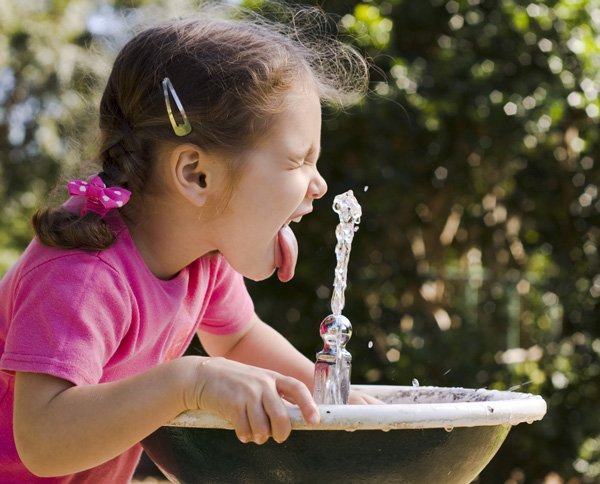
Now compound the problem by imagining the water’s travels through so many miles of antiquated piping to the point it emerges from your tap, and you’ll quickly decide you need to take final treatment before using around the house or drinking into your own hands.
It’s usually groundwater that ends up as city water, entering the facility through a large inlet with a large metal grill to keep debris out. The water is then initially screened at a pumping station where they remove garbage, fish, sewage, and grass. The raw, dirty, smelly, unsafe water then enters the plant where carbon is added to remove the lousy taste and odor.
The water then moves through a series of mixing tanks that coagulate and remove large chunks so that only the bacteria and virus-ridden water remains. Large amounts of chlorine and often fluoride are then added before pumping to elevated water towers that create water pressure in your home.
![]() “Well vs. City Water
“Well vs. City Water
Water, air, and cleanness are the chief articles in my pharmacy.”
~ Napoleon Bonaparte
Well Water
If you’re not excited about getting off of your well water yet because it’s yellow and smells like rotten eggs, after these facts you might be:
- 255 million metric tons of hazardous waste is dumped every year
- Over 400,000 American landfills, ponds, and pits contain some of the most dangerous substances known
- There are over 35,000 pesticides that can potentially wind up in our water supply
Of course everyone’s water supply is different depending on where you live, but these problems are fairly universal. A well must be properly constructed, located, and maintained to prevent toxic materials from infiltrating the well’s supply of water. Any local contamination has the potential to reach the aquifer that feeds your well.
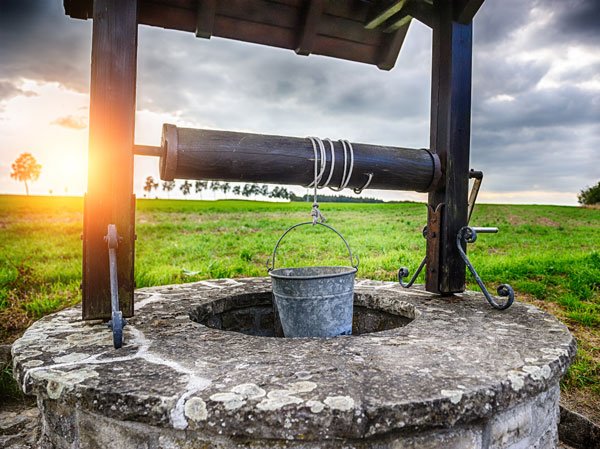
Water Testing
![]() “If you could tomorrow morning make water clean in the world, you would have done, in one fell swoop, the best thing you could have done for improving human health by improving environmental quality.”
“If you could tomorrow morning make water clean in the world, you would have done, in one fell swoop, the best thing you could have done for improving human health by improving environmental quality.”
~ William C. Clark, speech, Racine, Wisconsin, April 1988
Home Testing
Some contaminants are easy to detect: They stink or leave glaring evidence by way of a yellow film or chalky residue, or perhaps an overly strong smell of chlorine. But the obvious ones are not necessarily the greatest threats to your health or to be of the most concern.
The Water Quality Association’s website can be a valuable and interesting resource as they track emerging contaminants and provide helpful information and articles on common ones. The site also gives advice for when certain contaminants like sulfur and chlorine are found.
The most serious contaminants are the invisible ones, though:
- Bacteria
- Viruses
- Lead
- Other chemicals
These can’t be tasted or smelled. So how do you know what is in your water? Testing is the middle third, so to speak, of your healthy water plan we mentioned in the Introduction:
- Knowledge
- Testing
- Solutions
Luckily there are many ways to test your water right from your home and more methods are appearing all the time. If you know what is in your water, what kind of microscopic organisms, chemicals, and what contaminants are in there in the first place, you can better decide if filtration will work or if you need to avoid your water altogether.
Pros
The best method of course is to call a professional or have a water sample sent out to a lab for diagnosis. This is especially the case if you want your H2O simply tested for everything, so to speak.
There may be a reputable local lab you can call upon, or perhaps several and you can compare costs.
You can find a state-certified lab by:
- Calling the Environmental Protection Agency’s Safe Drinking Water Hotline at (800) 426-4791
- Or by going to the EPA’s website for a list of state-certified labs
- Or search online for testing laboratories.
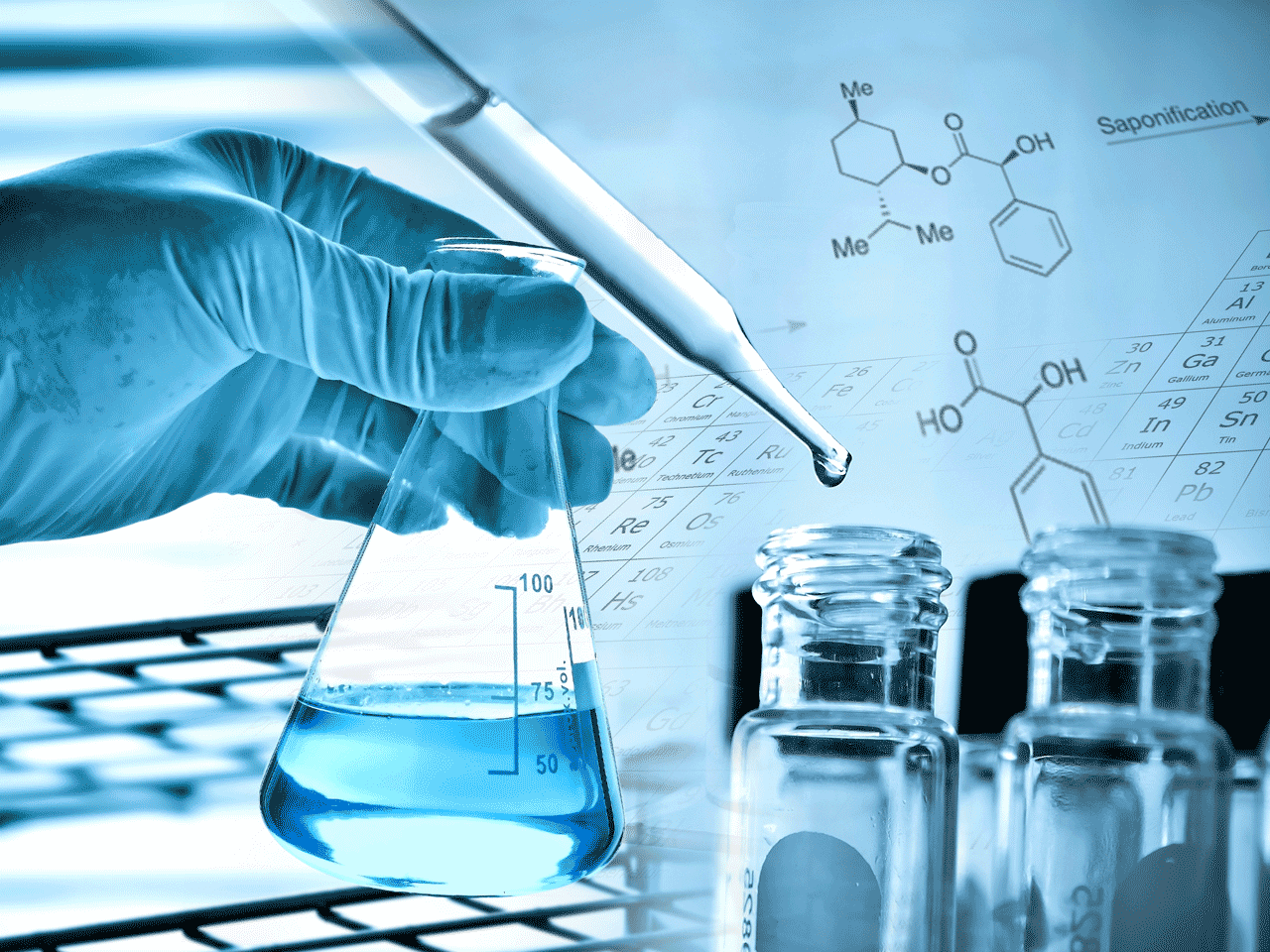
You can use a nationwide testing service. Underwriters Laboratories will test your water for a large variety of contaminants, from fecal bacteria to industrial pollutants, and get the results to you in about a week. The price depends on how many contaminants you want to test for and can range from just $30 to over $500 for a 94-contaminant screen.
You can usually call your local water utility and have them recommend a reputable independent lab. Getting free tests from water filtration companies will of course lead to sales efforts, which is fine as long as you know this upfront. In fact these tests are often free but rarely as comprehensive or thorough as a paid test you obtain on your own.
You will want to describe any concerns you have and tell them about the area you live in so they can more accurately decide and find what you need to know about your H2O. And once you have had a thorough initial test you can more easily test in the future just for what concerns you on an ongoing basis.
DIY
If you are on city H2O, many water agencies across the United States now make their annual water quality reports available online and you can access them on the Environmental Protection Agency’s (EPA) website.
In fact, if you have city H2O, some services will agree to take a sample you provide from your home and test it for you for free to see what, if anything, is getting into your water between the plant and your home.
More and more test kits for home use in analyzing your H2O are also becoming available and they are getting better and better. Try your local home superstore or find them online. They usually include test-strips which react to your water by changing color to indicate the presence of various contaminants in your H2O.
Home water test kits can run between $10 and $30 and they usually test for:
- Bacteria
- Lead
- Pesticides
- Nitrites/nitrates
- Chlorine
- Hardness
- PH
Two reputable home test kits are PurTest and Discover testing. Be forewarned though that these tests are not incredibly accurate and do not test for all possible contaminants. The best possible test, of course, will be to pay an independent lab with a good reputation and no vested interest in selling you anything.
Contaminants
The list of all possible pollutants and contaminants would be way, too long for this article and probably unnecessary. There are common contaminants, however, that should generally be tested for in drinking H2O.
Contaminants – Nuisance Bacteria
Nuisance bacteria are bacteria that are not necessarily dangerous but do release iron and sulfur into your H2O and form a biofilm on well surfaces.
Contaminants- Disease-Causing Bacteria
The most common disease-causing bacteria are the notorious e. coli as well as coliform, fecal coliform, and fecal streptococci. If you do find these you should have them professionally removed immediately.
Contaminants – Iron
Iron in water makes it or the film it leaves yellow or orange in color, especially in the shower or the surface of your washing machine. Your water may also have a bitter taste to it. This kind of water sometimes requires an additional, special filter to handle the iron.
Contaminants – Manganese
Manganese causes your water to be black or purple in color and can stain your sinks and tubs. It also has a bitter taste.
Contaminants – Hydrogen Sulphide (Sulfur)
Sulfur is notorious for the smell of rotten eggs. It can simply occur naturally or be caused by bacteria.
Contaminants – Hard water
Hard H2O has been discussed at length and is H2O with the presence of minerals. Most H2O treatment companies that want to install a H2O softener in your home will cite its deleterious effects on soap, your skin, and the chalky film it leaves on shower walls and glassware. More serious is the damage it can gradually but seriously do to the heater element in your water heater and how it can eventually clog your plumbing.
A H2O softener is a good solution for all of this as long as you are aware of and take measures to combat the health risks of consuming sift H2O on a regular basis, namely the high levels of sodium, the acidity due to lack of calcium and magnesium, and its ability to drain your body of nutrients.
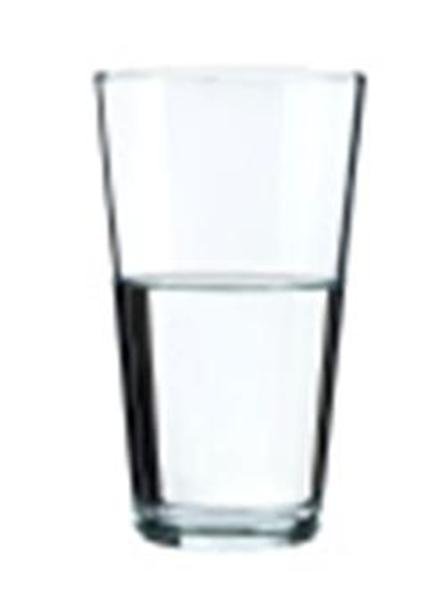
Contaminants – Lead
You can actually find poisonous lead in your H2O at home as a result of leakage from leaded solder in the joints of your plumbing and old brass plumbing components.
Lead is a neurotoxin which is quite dangerous to drink. Prior to 1978 paints were commonly manufactured with lead as a component which was found to cause brain damage and other problems for infants and pets who accidently consumed it.
Conclusion: The Best Water
![]() We forget that the water cycle and the life cycle are one.
We forget that the water cycle and the life cycle are one.
~ Jacques Cousteau
Optimal Water Choices
And at last we get to the good news! There are optimal choices you can make that yield the benefits of proper hydration without all the baggage – without the health risks, whether they are immediate or gradual.
You should be drinking H2O all throughout the day, every day, when at home and away. While health is the obvious first concern, do not discount economics and convenience, either, as they also play into your ability to maintain a healthy lifestyle with plenty of refreshing water.
At Home
A filtration system at home makes a lot of sense. In fact, African women spend about five hours each day seeking and bringing back H2O. We, however, generally have reliable indoor plumbing and a ready supply of H2O, whether it’s from the city or a well. A proper filtration system in either case begets the convenience and economics that make clean H2O at home for cleaning and household uses possible.
Drinking H2O should be given special attention, however. Mountain spring water may be your best choice if you do not have a more effective way of convenient filtration. By coming from a source at high altitudes you can often avoid many of the lower-level perils from ground saturation and contamination.
The ideal situation, regardless of your H2O source, would be to have a single, re-usable, convenient and effective way to purify your water whenever and wherever you are. Imagine that! Actually, such technology now exists, which we will get to in a moment.
- According to experts the ideal water for consumption would be slightly alkaline which requires the presence of some minerals such as calcium and magnesium.
- Reverse osmosis water would be pretty good, then, as long as some minerals are added to it somehow.
- For daily drinking, a charcoal filter creates slightly alkaline water as well. It’s even better if you then ozonate the water.
- Such drinking of slightly hard water has been shown to assist with human longevity, whereas
- Regular consumption of soft and distilled waters has been linked to disease and early death for reasons discussed
- A better alternative to toxic plastics if you like to have water with you on the go is to obtain a stainless steel thermos and fill it with carbon-filtered water.
Ideally, though, rather than your only source of the clean H2O being at home and having only what you bring, in a perfect world you would be able to convert any H2O you find into clean and healthy water in a compact and convenient way, and be able to store it in a safe, BPA-free container. As mentioned, this technology now also exists.
You can be a walking H2O treatment facility today, with a virtually infinite supply of healthy water.
Portable Water Filters that Deliver
SureAqua now provides a range world class high grade portable H2O filters that are very unique in the market. As careful as we must now be about what food we eat and what H2O we drink, the best solution is knowledge followed by personal action to ensure we are prepared to eat and drink well.
With a Sure Aqua’s portable water filter, you can filter water anywhere you are at any time and be assured you are not creating future health problems, and are benefitting from an adequate and healthy supply of daily water, whether you’re home, at work, playing sports, or even traveling.
Your peace of mind will be intact knowing you are not only removing chlorine but harmful bacteria and protozoa’s as well, and it’s all backed by SureAqua’s guarantee of quality. SureAqua filters are currently used by:
- Consumers
- Travelers
- Military
- Aid agencies
And what we really like is the feature in SureAqua filters that stops the filter from working altogether when the filter is ready for replacement. This solves the number one issue consumers generally have with self-filtration devices and systems. You never have to worry about drinking from an expired filter.
Portable Water Filters that Deliver
SureAqua now provides a range world class high grade portable water filters that are very unique in the market. As careful as we must now be about what food we eat and what water we drink, the best solution is knowledge followed by personal action to ensure we are prepared to eat and drink well.
With a Sure Aqua’s portable water filter, you can filter water anywhere you are at any time and be assured you are not creating future health problems, and are benefitting from an adequate and healthy supply of daily water, whether you’re home, at work, playing sports, or even traveling.
Your peace of mind will be intact knowing you are not only removing chlorine but harmful bacteria and protozoa’s as well, and it’s all backed by SureAqua’s guarantee of quality. SureAqua filters are currently used by:
- Consumers
- Travelers
- Military
- Aid agencies
And what we really like is the feature in SureAqua filters that stops the filter from working altogether when the filter is ready for replacement. This solves the number one issue consumers generally have with self-filtration devices and systems. You never have to worry about drinking from an expired filter.
Moving Forward
In the classic science-fiction film Dune, the main characters live on a desert planet and only one person every few generations dare try a drop or two of the water of life. The inhabitants had adapted to not having any H2O whatsoever and when they did it usually killed them.
Only the messiah in the story is able to take several drops as he is strapped down, after which he undergoes a painful metamorphosis of his supernatural abilities as they awaken within him.
We aren’t quite there yet – in fact we have an embarrassment of riches as far as H2O sources and supply, as well as convenience. But that great supply is becoming tainted at an alarming rate. It’s true, though, that water sort of unlocks potentials in us if you consider the physical and mental benefits of keeping properly hydrated, and how incapacitating it can be to walk around constantly dehydrated or worse.
Thankfully, we have a growing awareness and live also in an age of technology that answers most consumer needs. Clean water is not just a want.
Use this information to arrange better water for you and yours! We hope you live a long and happy life, nurtured by the clean, refreshing water of life. With good information and a little action on your part, you certainly can and will.
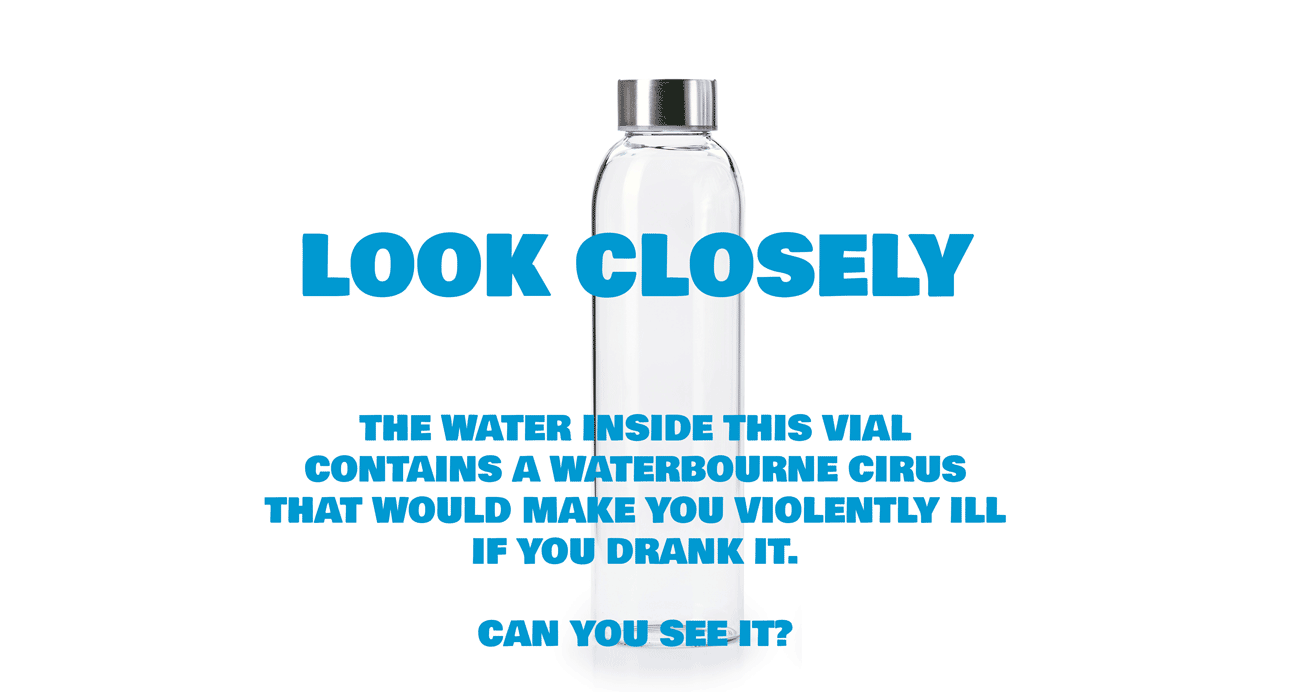
References
http://www.drjjgregor.com/2013/05/01/all-water-is-not-created-equal/
http://www.getfitwithjana.com/blog/is-all-water-created-equal
http://www.groundwater.org/get-informed/basics/cycle.html
http://en.wikipedia.org/wiki/Heavy_water
http://chemistry.about.com/cs/howthingswork/a/aa082403a.htm
http://www.mnn.com/food/healthy-eating/stories/5-reasons-not-to-drink-bottled-water
http://www.mercola.com/article/water/distilled_water.htm
http://www.ehow.com/facts_5191634_bottled-water-expensive_.html
http://en.wikipedia.org/wiki/Distilled_water
http://www.gizmag.com/go/6320/
http://www.babycenter.com/0_how-to-tell-if-your-water-is-safe_469.bc
http://lifehacker.com/5927732/afraid-of-contamination-how-to-test-the-water-in-your-house
http://money.howstuffworks.com/bling-water1.htm/
http://www.zmescience.com/ecology/environmental-issues/bottled-water-tap-11032011/
http://en.wikipedia.org/wiki/Carbonated_water

